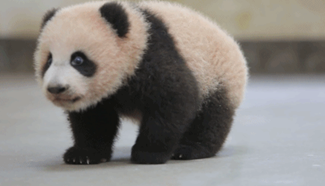SYDNEY, Nov. 8 (Xinhua) -- The iconic Ulysses butterfly which used to be a common sight at Far North, Queensland, Australia has now become a rarity prompting panic among the locals for fear that it may be extinct.
The Kuranda-based Australian Butterfly Sanctuary has expressed significant concern that the butterflies may become extinct, and is calling for the state government support and funding before the species disappears for good.
The sanctuary's general manager Mel Nikolich told Xinhua on Tuesday that the electric blue butterflies have not been seen in the sanctuary for the past six months or "maybe be more".
"We don't know how much (money) we need as yet, we are now currently working with the researchers at the James Cook University to determine that," Nikolich said.
"There problem lies in the breeding as the caterpillars keep dying and we need to find out why, the problem could be anything from environmental to anything, we don't know, that's why we need to do the research," she said.
She said since the beginning of 2016, the numbers of the iconic butterfly have rapidly decreasing in the wild, as well as within private stocks of butterflies breeders.
Observations by experienced butterfly breeders and the general public indicate that although Ulysses butterflies are still being seen in some gardens around the region, the overall numbers in the wild have substantially dwindled.
The sanctuary in the past had reported a 90 percent success rate in breeding the species. However, the rate has plummeted to zero percent in recent months with no Ulysses butterflies on display for tourists to enjoy.
Senior researchers at the James Cook University in Queensland have begun discussions with the sanctuary to try and understand what is causing the rapid decrease.
"To date, the sanctuary has contributed significantly through extra laboratory time and staff wages trying to counter and understand this substantial decrease in numbers, as it affects all of us in the region," Nikolich said.
"We have been sharing our findings with other local breeders, but sadly we have yet to determine the cause of the decline," she added.
In addition to the overall decrease in numbers the chances of a naturally-occurring boost in the population have been reduced by the high percentage of male butterflies in the wild.
"If we see a Ulysses in the wild, it's usually a male which only adds to the problem as there are not enough females around to breed," Nikolich added.
Meanwhile, James Cook University lecturer Dr Tobin Northfield said quick action was needed to prevent the extinction of the Ulysses butterfly.
"One of the keys to avoiding species extinctions is to heed the early warning signs identified by local groups working closely with the species," he said.
"Therefore, it is imperative that we identify the drivers of the problems facing these butterflies now," he added.










